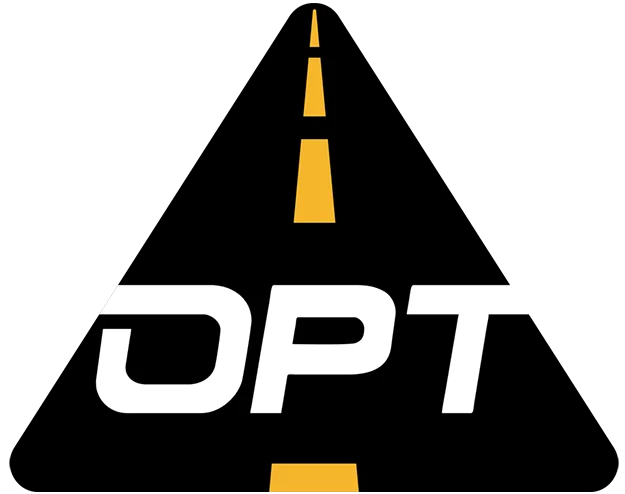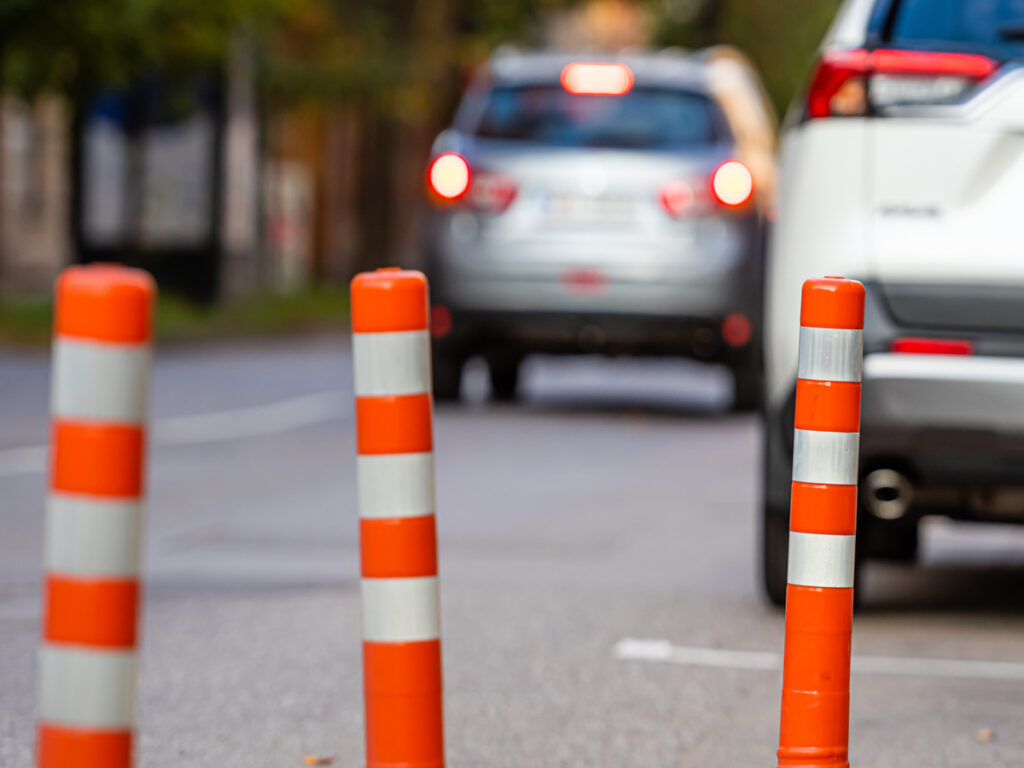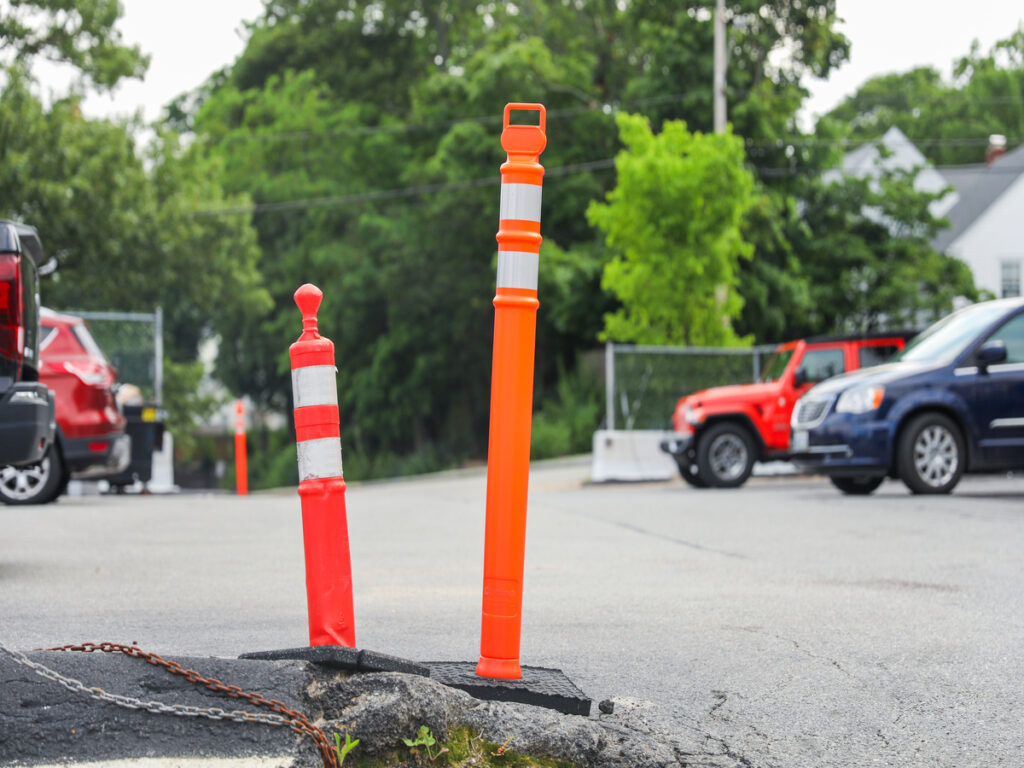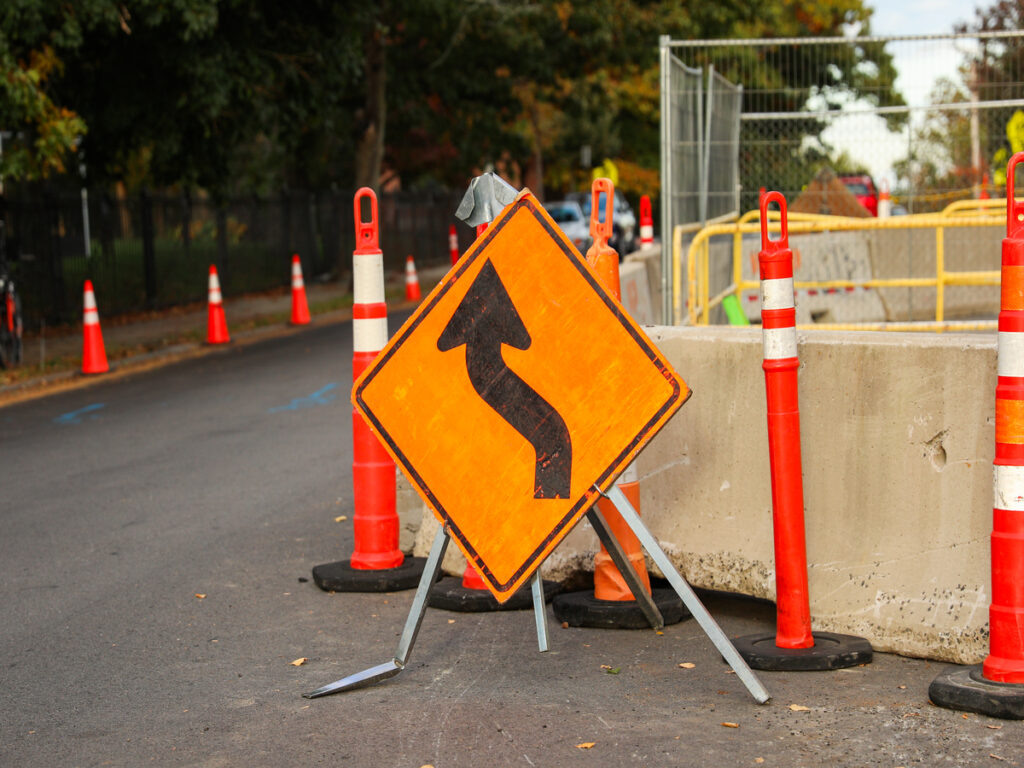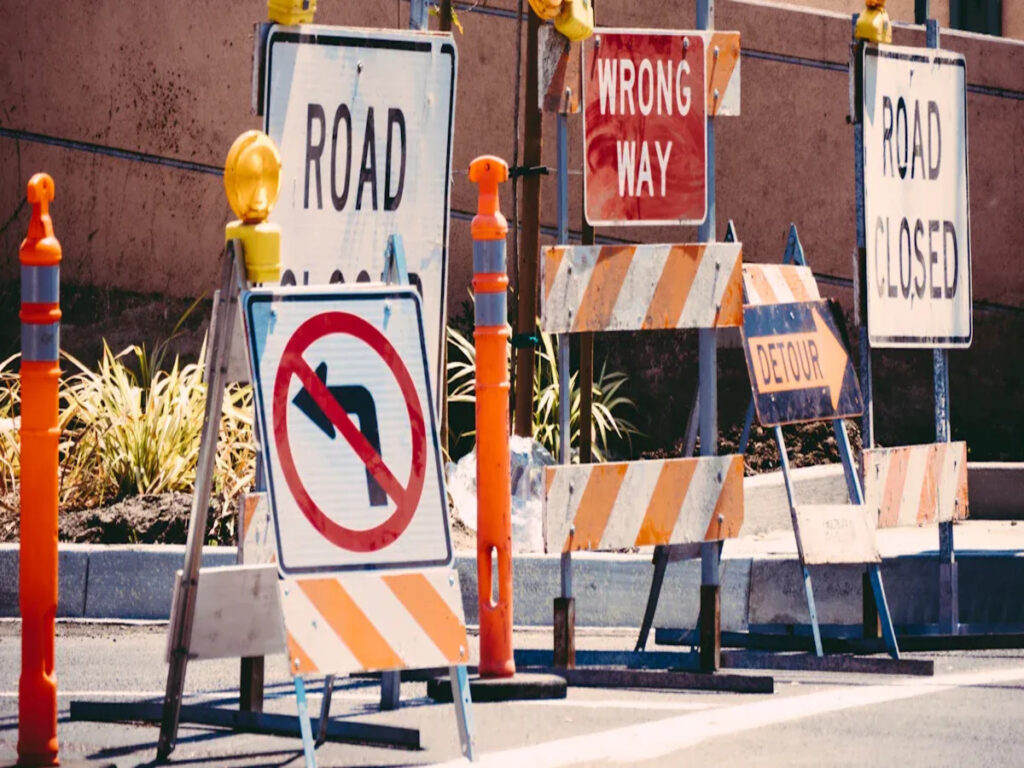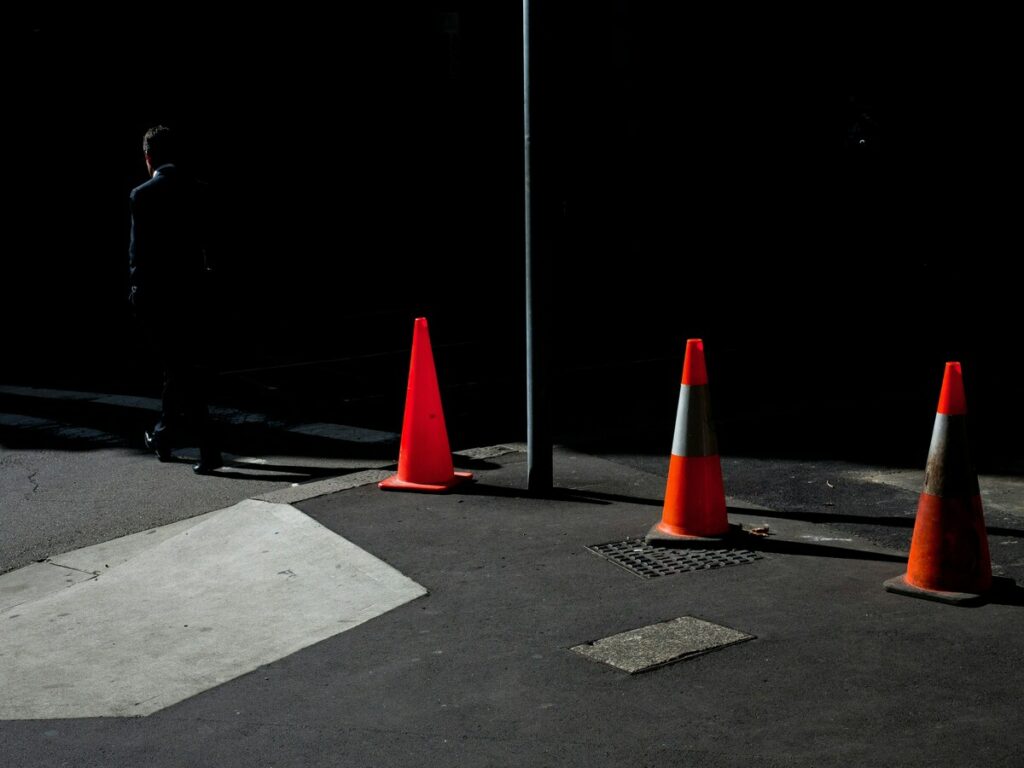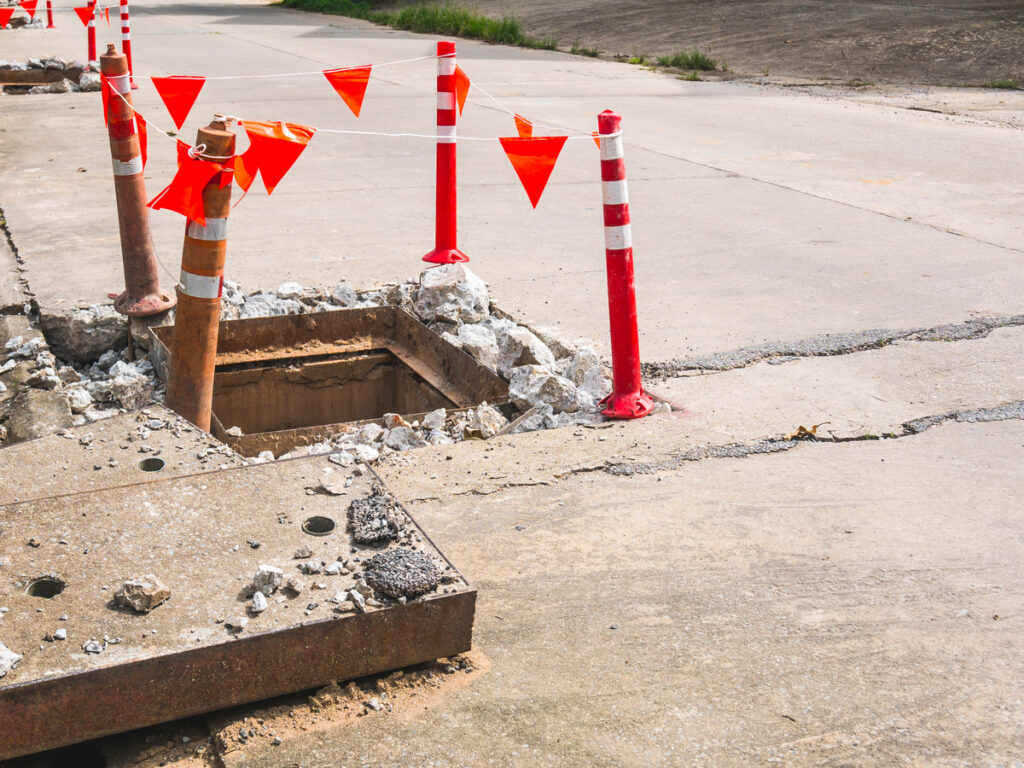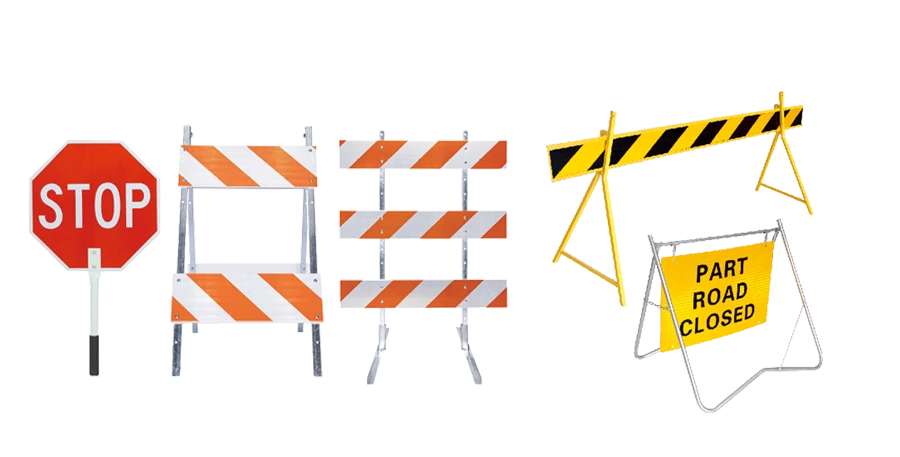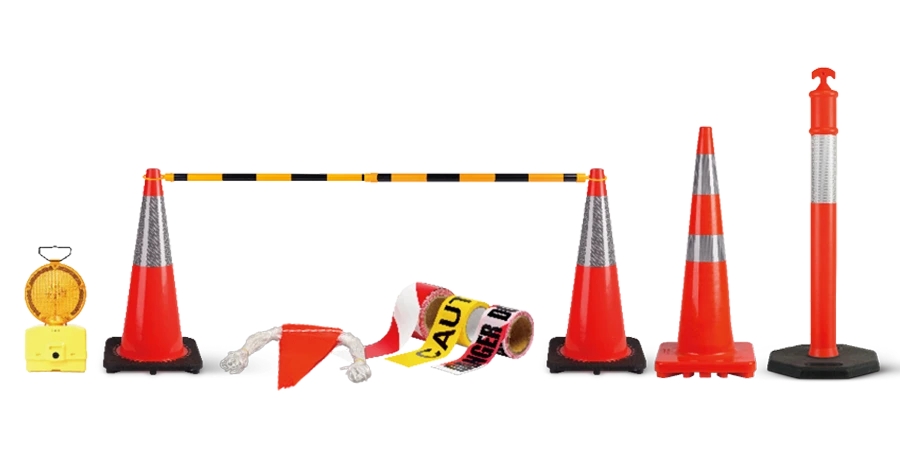
Driving on U.S. mountain highways can feel scary. Tight turns, steep hills, and sudden weather changes need safe solutions. Vertical Delineators are easy to see and guide drivers well. They work great on rough roads and don’t make loud noises. At night or in thick fog, these Vertical Delineators help you stay safe. Picking Vertical Delineators means choosing a safer, quieter, and better way to drive in mountains.
Choose OPTRAFFIC for your Vertical Delineator needs, ensuring high-quality and reliable safety on every road.
Key Takeaways
- Vertical delineators make mountain roads safer by marking lanes clearly.
- They are quieter than rumble strips, helping drivers stay calm.
- These markers also reduce noise for people living nearby.
- Delineators are strong and last long in tough mountain weather.
- They need fewer repairs, saving money on upkeep over time.
- Adding solar lights and sensors will make them even better soon.
Understanding Vertical Delineators and Rumble Strips
What Are Vertical Delineators?
Definition and Functionality
Vertical delineators are tools that help drivers stay safe. These tall markers are reflective and easy to see. They are especially helpful on dangerous roads. Their main job is to show clear lane boundaries. This helps drivers stay in their lanes and handle sharp turns. Vertical delineators are light and simple to set up. They work well for both long-term and short-term use.
| Feature | Description |
|---|---|
| Height | Tall design makes them easy to spot. |
| Reflective Surfaces | Reflective materials improve visibility from far away. |
| Durability | Built to handle bad weather and impacts. |
| Flexibility | Lightweight and quick to install for temporary use. |
These qualities make vertical delineators a great choice for safer mountain driving.
Role in Enhancing Visibility and Guidance
Driving in fog, rain, or snow can be hard. Vertical delineators shine in these conditions by reflecting light. They guide drivers clearly, even in bad weather. Placing them on curves and intersections helps drivers see road changes early. This reduces stress and keeps drivers focused. With clear visual signals, delineators help prevent accidents and keep drivers in control.
Choose OPTRAFFIC for high-quality traffic delineators that enhance road safety in all weather conditions. Drive with confidence and stay safe with OPTRAFFIC.
Contact Us Today for More Information and Expert Guidance.
What Are Rumble Strips?
Definition and Common Uses
Rumble strips are another tool used to keep roads safe. They are grooves or raised patterns on the road. When cars drive over them, they make noise and vibrations. This alerts drivers and grabs their attention. Rumble strips are often placed on highways to stop cars from leaving their lanes.
| Study Title | Findings |
|---|---|
| Operational Effects of Shoulder and Centerline Rumble Strips on Two-Lane Undivided Highways | No sudden moves; drivers stayed calm. |
| Shoulder Rumble Strip Effectiveness on the Pennsylvania Turnpike | Crashes dropped by 60% after installation. |
| Crash Reduction Following Installation of Centerline Rumble Strips on Rural Two-Lane Roads | 15% fewer crashes; 25% fewer head-on crashes. |
| Benefit-Cost Evaluation of MoDOT’s Total Striping and Delineation Program | 60% fewer crossover crashes; 84% fewer severe crashes. |
| Safety Effects of Centerline Rumble Strips in Minnesota | Fatal crashes dropped by 25%; overall crashes went down. |
These studies show rumble strips are good at reducing crashes, especially on straight roads.
How They Alert Drivers Through Noise and Vibration
Rumble strips work by making noise and vibrations. When tires roll over them, drivers feel a jolt. This wakes up tired or distracted drivers. But in mountains, noise and vibration may not be enough. Visibility is more important in these areas.
The Specific Challenges of Mountain Highways
Characteristics of Mountain Highways
Sharp Turns and Narrow Lanes
Mountain roads have sharp turns and narrow lanes. These roads often pass steep cliffs and thick forests. There is little room for mistakes. A small error can cause dangerous lane departures. Vertical delineators help drivers stay in their lanes. Their reflective surfaces make road edges visible, even in darkness.
Steep Inclines and Declines
Driving on steep slopes can be tough. Going downhill fast can make brakes fail. It also makes reacting quickly harder. Vertical delineators show where the road changes. They help drivers feel safer on these tricky slopes.
Unpredictable Weather Conditions
Mountain weather changes quickly. It can go from sunny to foggy or snowy fast. These conditions make it hard to see and roads slippery. Vertical delineators reflect light and stand above snow. They help drivers see the road, even in bad weather.
Safety Risks on Mountain Roads
Lane Departure and Reduced Reaction Time
Lane departures cause many accidents on mountain roads. Tight curves and poor visibility make staying in your lane hard. Slow reaction times add more danger. Vertical delineators give constant visual cues. They keep drivers alert and in control.
- Key Risks of Lane Departure:
- Higher chances of head-on crashes.
- Risk of falling off steep cliffs.
- Less time to fix mistakes.
Driver Fatigue and Distraction
Long drives on mountain roads can tire drivers. Fatigue and distractions make focusing harder. Noise from rumble strips can increase stress. Vertical delineators are quieter and guide drivers visually. This reduces stress and helps drivers stay focused.
Tip: Take breaks often during long drives to stay alert.
The Advantages of Vertical Delineators in Mountainous Terrain
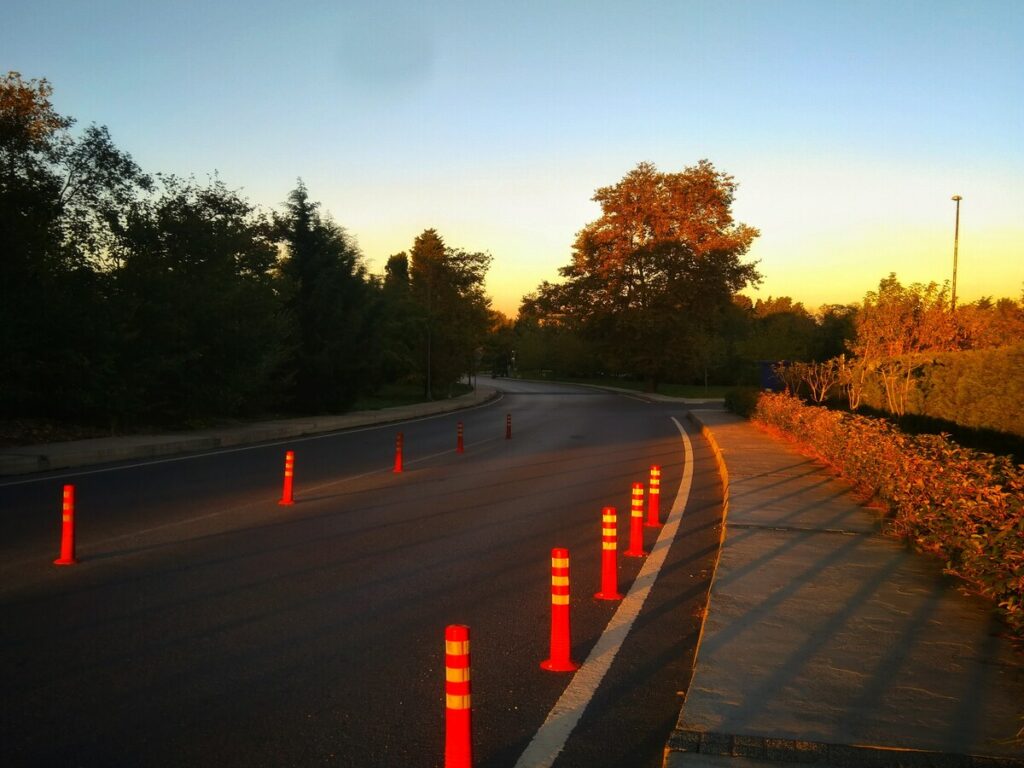
Better Visibility and Guidance
Helping in Dark Conditions
Driving at night on mountain roads is tough. Dim lighting and sharp turns make it tricky. Vertical delineators fix this with their shiny surfaces. These surfaces reflect car headlights, showing lane edges clearly. This helps you drive safely, even in total darkness. By marking the road, they lower accident risks and boost your confidence.
Working Well in Fog, Rain, and Snow
Mountain weather changes fast. Fog, rain, and snow can appear suddenly. These make it hard to see and roads slippery. Vertical delineators work great in these conditions. Their reflective parts stay visible in thick fog or heavy rain. In snow, their height makes them stand above snow piles. They guide you safely when visibility is poor.
Keeping Drivers Alert
Clear Signs on Curves and Crossings
Curves and crossings on mountain roads need extra care. Vertical delineators give clear signs for these tricky spots. They are placed to show road changes early. This helps you stay in your lane and avoid mistakes. With these markers, you can handle curves and crossings more easily.
Lowering Stress and Tiredness
Long drives on winding roads can wear you out. Watching for lane edges all the time is tiring. Vertical delineators make this easier by giving constant visual help. Their reflective design and smart placement reduce your mental effort. This keeps you calm and focused, making your trip safer and less tiring.
Quiet and Safe
No Noise for Drivers and Neighbors
Rumble strips make loud noises, but vertical traffic delineators don’t. This makes them perfect for mountain roads. They keep drivers safe without disturbing nearby homes. You can drive peacefully without loud sounds. People living near highways also enjoy a quieter area.
The Problems with Rumble Strips on Mountain Roads
Loud Noise and Driver Stress
Noise That Distracts Drivers
Rumble strips make loud sounds when cars drive over them. On mountain roads, this noise happens often and can be annoying. It might distract you, especially on sharp turns or steep hills. Instead of helping, the noise can make driving harder. Long trips with this constant sound can also tire you out mentally.
Noise Bothers Nearby Residents
If you live near a mountain road, rumble strip noise can be a problem. The loud sounds don’t just bother drivers; they disturb people living nearby too. Imagine hearing cars rumbling all day and night. This noise can make life less enjoyable for those living close to the highway. Vertical delineators are quieter and better for both drivers and neighbors.
Not Reliable in Bad Weather
Hard to Use in Fog or Snow
Rumble strips depend on vibrations, which don’t work well in bad weather. In fog or snow, you need to see the road clearly to stay safe. Rumble strips can get covered by snow or ice, making them useless. Vertical delineators stay visible and helpful, even in tough weather.
Weak Feedback on Steep Slopes
On steep mountain roads, rumble strips may not work well. The slope can make the vibrations weaker, so you might not notice them in time. This makes rumble strips less dependable for keeping drivers safe on mountain roads.
Road Damage and Repairs
Roads Wear Out Faster
Rumble strips can damage the road over time. This wear and tear can lead to expensive repairs. On mountain roads, where fixing roads is already hard, this makes things worse. You might see bumpy roads or potholes, which make driving unsafe.
Hard to Fix in Mountains
Fixing rumble strips in mountains is tough. Bad weather and rough terrain make repairs slow and costly. Vertical delineators last longer and need less fixing, making them a smarter choice for mountain roads.
DOT Case Study: Success of Vertical Delineators on U.S. Mountain Highways
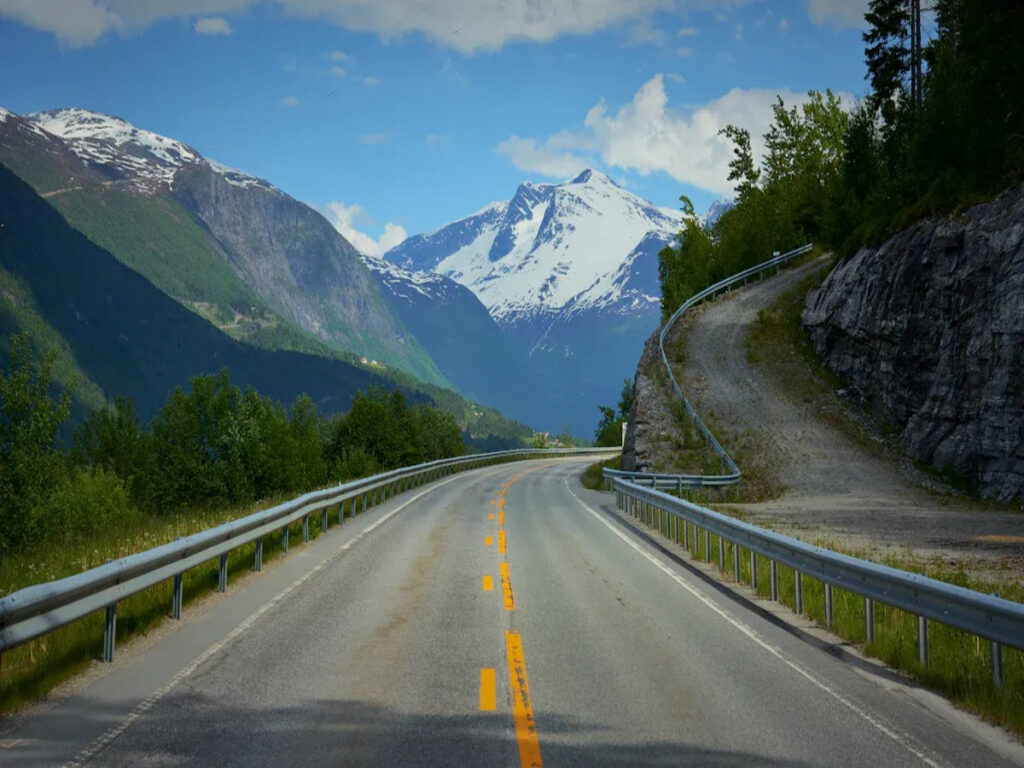
Improved Safety Outcomes
Fewer Lane Departure Problems
Lane departures are risky on mountain roads. A DOT study found vertical delineators reduced these problems a lot. They gave clear lane markers, helping drivers stay on track. Even on sharp turns or in bad weather, drivers stayed in their lanes. This cut down on head-on crashes and cars going off the road. With delineators, drivers felt safer on tricky mountain routes.
Fewer Crashes and Complaints
The study also showed fewer crashes after adding traffic delineators. Drivers had fewer issues with unclear road signs or confusing curves. These markers gave steady guidance, even in bad weather spots. By making roads clearer, delineators made driving safer. The result? Fewer crashes and happier drivers.
Comparing to Rumble Strips
Better for Visibility
Vertical delineators worked better than rumble strips. Rumble strips use noise and bumps, but traffic delineators give visual help. This is important on mountain roads where seeing clearly is hard. Drivers could see the road better, even in fog or snow. The study proved delineators were safer on steep, winding roads.
Liked by Drivers and Neighbors
People living near mountain roads liked traffic delineators more. Rumble strips are noisy, but traffic delineators are quiet. Neighbors enjoyed less noise, and drivers liked the clear guidance. This made delineators a popular choice. Both drivers and communities agreed they were the best option for mountain safety.
Why Vertical Delineators Are a Smarter Choice
Strong and Long-Lasting
Built for Tough Weather
Mountain roads face tough weather like snow and strong sun. Vertical delineators are made to handle these conditions. They use materials like polyethylene and polycarbonate. These materials resist sunlight, impacts, and temperature changes. This keeps them working well in any weather. Unlike other tools, they don’t crack, fade, or lose their shine. This makes them a safe and reliable choice for mountain roads.
| Material | Features | Strength Level |
|---|---|---|
| Polyethylene (PE) | Light, bendable, resists sunlight | High |
| Polyurethane (PU) | Strong, flexible, resists scratches | Very High |
| Thermoplastic Polyurethane (TPU) | Super strong, resists impacts, flexible | Very High |
Fewer Repairs Needed
Fixing road tools often can block traffic and cost money. Vertical delineators solve this problem. They are tough and don’t wear out quickly. Rumble strips, on steep roads, break down faster. But delineators stay strong for years. This means fewer repairs and safer roads for everyone.
Better for the Environment
Made with Green Materials
Vertical delineators often use recycled plastics. These eco-friendly materials help reduce waste. Making them uses less harmful processes. By choosing delineators, you help the planet while keeping roads safe.
Less Pollution Than Rumble Strips
Rumble strips need big machines and lots of repairs. This creates more pollution. Vertical delineators last longer and need less fixing. This lowers their carbon footprint. They are a better choice for keeping mountain roads safe and green.
Saves Money Over Time
Cheaper to Install and Maintain
Vertical delineators are easy to set up. Their light design makes installation quick and cheap. They also need fewer repairs, saving money over time. Departments of Transportation can use these savings for other projects.
Long-Term Budget Benefits
Using vertical delineators saves money in the long run. They last longer, so you don’t need to replace them often. This cuts costs for materials and labor. Over time, these savings add up. Choosing delineators is smart for safety and budgets.
Future Trends: Integrating Vertical Delineators with Advanced Technology
Smart Technology Integration
Bright Coatings and Solar Lights
Picture driving on a dark mountain road with poor visibility. Reflective coatings and solar lights on vertical delineators can help. These features make the markers glow brightly, even in total darkness. Solar lights collect energy during the day and light up at night. This keeps roads safe without needing regular streetlights.
A project by the Kansas Department of Transportation (KDOT) tested solar-powered delineators. They installed 600 of these on US-169 in southeast Kansas. The markers improved visibility and safety in dim areas. After two tough winters, only 1.2% of them were damaged. People in rural areas loved the change, especially where streetlights are rare. This reduced accidents and showed how smart technology can improve road safety.
| Aspect | Details |
|---|---|
| Project | Kansas Department of Transportation (KDOT) |
| Technology Used | Solar-powered traffic delineators |
| Location | US-169 in southeast Kansas |
| Number of Delineators | 600 |
| Key Benefits | Better visibility, safer low-light driving, positive public feedback |
| Durability | Only 1.2% damage after two harsh winters |
| Conclusion | Great for rural areas with few lights, lowering accident risks |
Sensors for Live Traffic Updates
Sensors in vertical delineators could change how we drive on mountain roads. These sensors gather live data about traffic, weather, and road dangers. The information can be sent to drivers through connected systems. For example, if a road gets icy, the sensors can warn you right away. This helps you slow down or pick a safer route.
Better Driver Guidance
New Ideas for Clearer Visibility
Future upgrades to vertical delineators will make them even better. Features like LED lights and smart brightness controls are being developed. These systems adjust light levels based on weather or time of day. This ensures you always see the road clearly. Driving on sharp curves or steep hills will feel less stressful with these improvements.
Safer Mountain Roads Ahead
Adding smart technology to vertical delineators can make mountain roads much safer. Combining reflective coatings, solar lights, and sensors creates a full safety system. These markers not only guide you but also warn you about road conditions. This all-in-one approach helps keep you safe, even in tough driving situations.
You need the best tools for safe mountain driving. Vertical delineators are better because they are easy to see. They help you on sharp turns and steep hills quietly. These markers last long and save money, making them great. With new technology, they will keep improving for safer roads. Pick vertical delineators for a quiet, smart, and dependable choice on tough highways.
FAQ
Why are vertical delineators better than rumble strips on mountain roads?
Vertical delineators are easier to see in any weather. Their shiny surfaces help you on sharp turns and steep hills. They don’t make noise like rumble strips, so they’re quieter and better for nearby communities. 🚗✨
Can vertical delineators handle tough mountain weather?
Yes! Vertical delineators are made from strong materials like polyethylene and polyurethane. They can stand up to snow, rain, and sunlight. This strength means they last longer and save money on repairs. 🌦️❄️
How do vertical delineators help drivers stay focused?
These markers give clear visual guidance, making driving easier. Their reflective design helps you stay alert, even on long trips or in bad weather. This keeps you focused and less stressed. 👀✅
Are vertical delineators more expensive than rumble strips?
No, they save money over time. Vertical delineators need fewer repairs and last longer. They are easy to install and cost less overall, making them a smart choice for mountain roads. 💰📉
Can vertical delineators use new technology?
Yes! Vertical delineators can include features like solar lights and sensors. These upgrades improve visibility and give live traffic updates, making mountain roads safer. 🚦🔋
